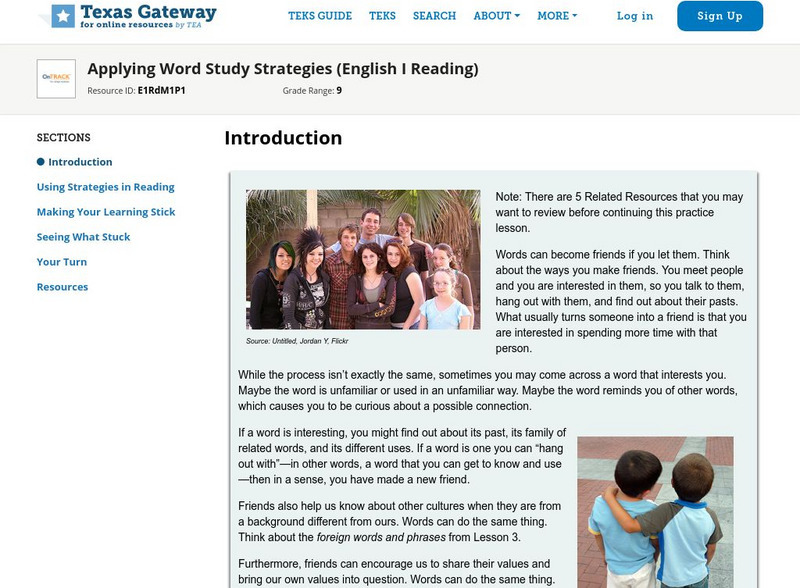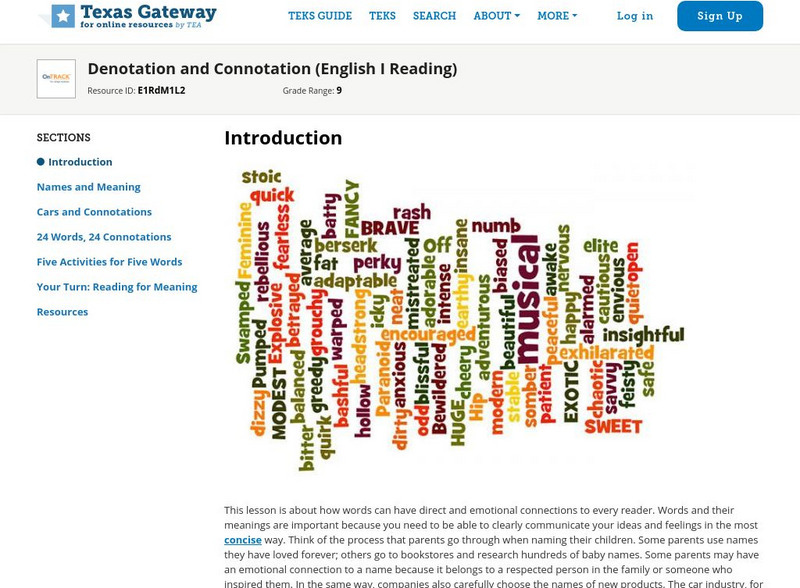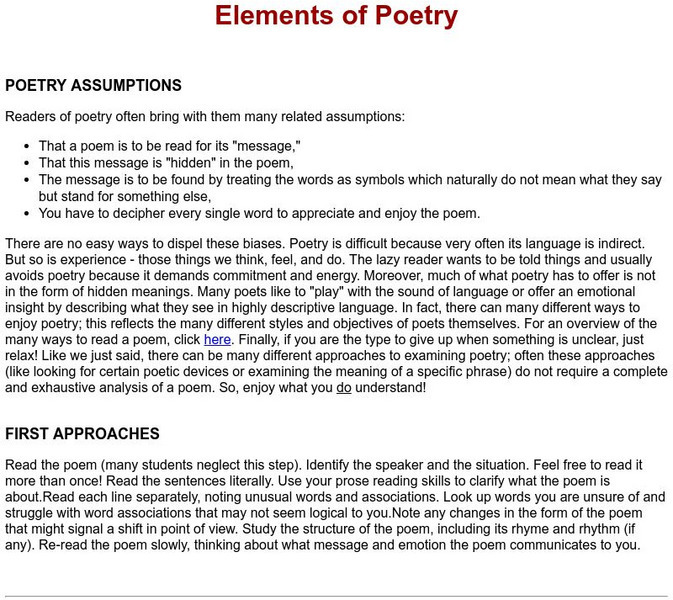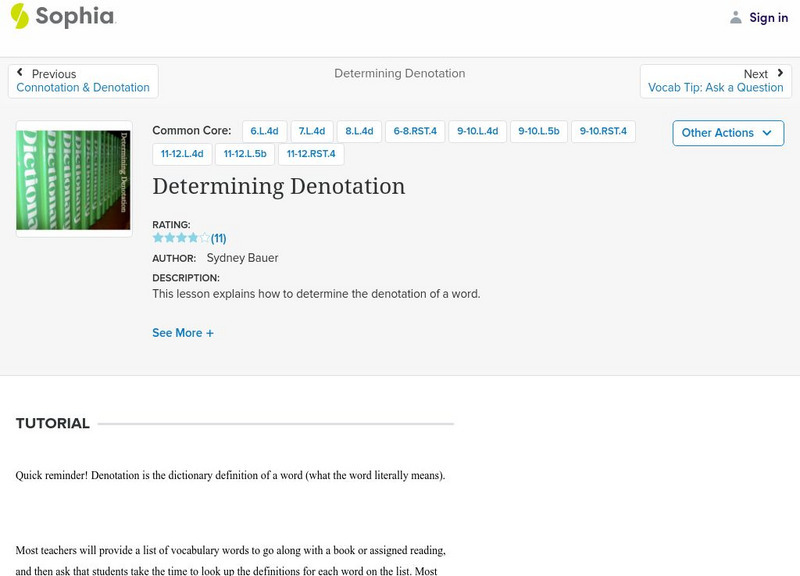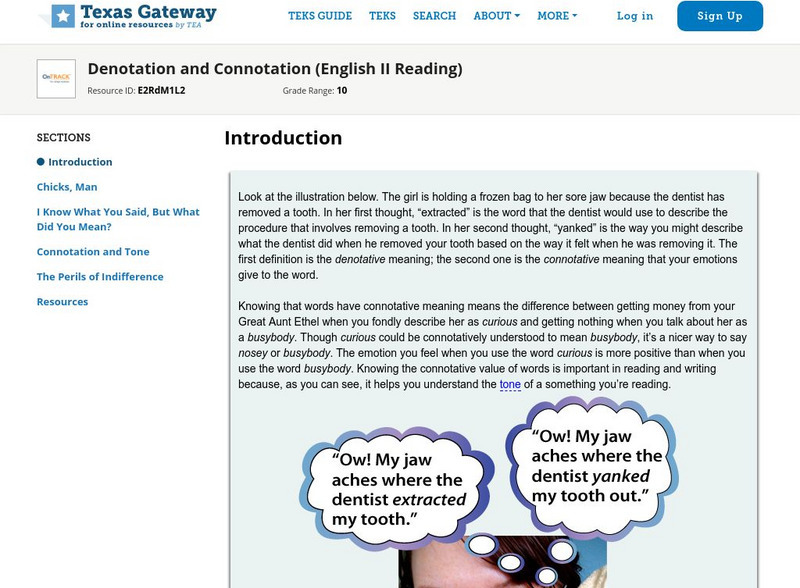Curated OER
Sentence Completion 4: High-Intermediate level
Do your learners need more sentence completion practice? Check out this eight-question instructional activity. It comes with an answer and explanations key that models how to approach each question. Logical explanations and comprehension...
Google
Beginner 4: Searching for Evidence for Research Tasks
Having a strong searching skill set can make a research project much easier and much for successful for pupils. Tackle finding evidence with the ideas included here. The ultimate goal is for class members to learn the stepping stones...
Curated OER
Analyzing Literary Devices
Eighth graders identify figurative language and poetry in this literary analysis lesson. Using Through the Looking Glass by Lewis Carroll and a YouTube video for "The Walrus and the Carpenter," young readers complete a literary device...
Curated OER
Ramses The Great
Students investigate the statue that memorialized Ramses II. In this world monuments lesson, students research national and local monuments to find out if there are any controversies regarding their construction. Students...
Curated OER
Activity Plan 5-6: What's In a Name?
Students use family names to gather and analyze data. In this counting lesson plan, students use graph paper to help organize their data and then, in a staircase fashion, organize the names from longest to shortest so they can answer...
Alabama Learning Exchange
Environmental Scrapbook and Podcast
High schoolers collect newspaper and magazine articles about the environment and construct a scrapbook using construction paper, glue, and scissors. To make it even more environmentally friendly, groups can create an online...
Curated OER
Winterdance
In this chronological order worksheet, learners put story events in order that they are given. Students put 7 events in chronological order.
Curated OER
Eng 312: Final Exam
When paired with other powerpoints by Don L.F. Nilsen, this final exam covers topics addressed throughout previous lectures (slide 14 specifies which lectures should be reviewed). Teachers could use this presentation to craft their own...
Curated OER
How To Identify Figurative Language
Students investigate writing techniques by analyzing a chart. In this figurative language lesson, students define similes, metaphors and identify the difference between them and personification. Students demonstrate their understanding...
Curated OER
A Tall Ship and a Star to Steer Her By
Students create a water transportation device powered by wind. In this wind power lesson, students research transportation concepts after reading the poem "Sea Fever" by John Masefield. Students design the fastest sailboat they can...
Curated OER
Science TV: Making it Real
High schoolers explore the ways science is presented in a children's television show. Students conduct internet research, and then create and design a skit that highlights the problem-solving process.
Curated OER
Story Mapping
Students prewrite a story using graphic organizers. In this prewriting lesson plan, students create a story map before they start their writing.
Curated OER
Friends Series One New Year Episode (The One with the Monkey)
In this Friends tv series worksheet, learners match up the characters described with twenty-two statements from the show. Although this is a worksheet about a tv show, there is some language skill-building present in the worksheet.
Curated OER
Anne Frank: Propaganda
Students discover techniques that are used to spread propaganda. They define what propaganda is and how it can be used in both a positive and negative manner. They produce an ad campaign for product.
ReadWriteThink
Read Write Think: Avalanche, Aztek, or Bravada? A Connotation Minilesson
Interesting instructional activity which stresses the importance of connotation in writing by examining car names. Students participate in an interactive instructional activity in which they learn the value of connotation and begin to...
TES Global
Blendspace: Connotation/denotation
Work through links to activities, assessments, websites, and videos to learn about connotation and denotation.
Sophia Learning
Sophia: Evaluating the Connotation
This lesson focuses on evaluating the connotation of a vocabulary word. It defines connotation and gives an example. It details three steps: read the word in context, determine the tone of the overall reading, and compare the tone with...
Other
Prezi: Tone, Diction, and Analysis of Word Choice
Slideshow explores the connection between word choice and the author's tone.
Texas Education Agency
Texas Gateway: Applying Word Study Strategies (English I Reading)
In this lesson, students will practice applying word study strategies to improve your reading fluency and comprehension. L.9-10.5b nuances
Other
Visual Thesaurus: Shades of Meaning
In this lesson, small groups of students will compete in a "shades of meaning" contest to see which group can use the Visual Thesaurus to help them match words with similar definitions but different connotations in the shortest amount of...
Texas Education Agency
Texas Gateway: Denotation and Connotation (English I Reading)
Distinguish between the denotative (dictionary) meaning of a word and its connotative (emotions or associations that are implied rather than literal) meaning. L.9-10.5b nuances
Other
Lexiconic.net: Elements of Poetry
This resource explains how to approach an analysis of a poem. It discusses assumptions people may have, the importance of reading it closely before analyzing it, looking at the stanza structure, the type of poem, the sound patterns,...
Sophia Learning
Sophia: Determining Denotation
This lesson explains how to determine the denotation of words; it defines denotation and offers a plan of action: look up the word in the dictionary, read all meanings paying attention to parts of speech, and compare each of these...
Texas Education Agency
Texas Gateway: Denotation and Connotation (English Ii Reading)
This lesson is about how words can have emotional connections for readers. Connotation and denotation are a part of language, and knowing about them can help you understand not only the author's purpose, but also the author's attitude...


















